

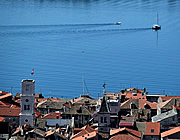
Sibenik is a lovely place to wander, discovering ancient churches, hidden gardens and mighty fortresses. Beautiful Plitvice Lakes and its many impressive waterfalls are not too far away.
Rovinj was a little too touristy for our tastes, though we had a great lunch here. Pula is worth a quick visit for the impressive Roman amphitheatre and temple.
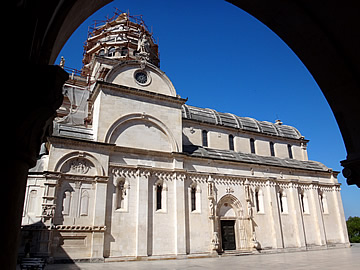
Out of season, with no cruise ships, Sibenik is a lovely unspoilt town with narrow twisting alleys, sunlit squares and no tourist tat.
Founded by the Croats around the turn of the tenth century Sibenik has been attacked and ruled by foreign powers, notably Venice, Byzantium and Hungary, many times. Venetian rule left three fortresses as an enduring legacy: St. Michael's close to the Old Town and St. John's and Barone Fortresses on the high ground above the town.
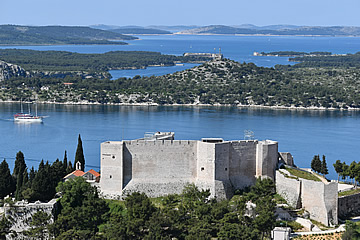
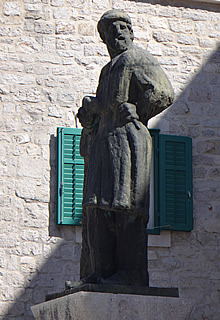
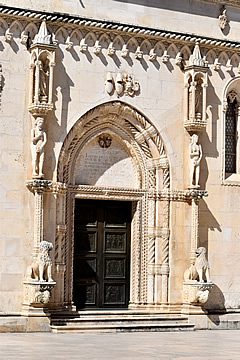
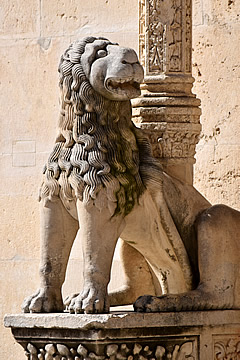
The jewel of Venetian rule, however, is the beautiful Cathedral of St. James in the heart of the medieval city close to the waterfront. Begun in 1431 the cathedral occupies the site of a much older Romanesque church and took 105 years to complete.
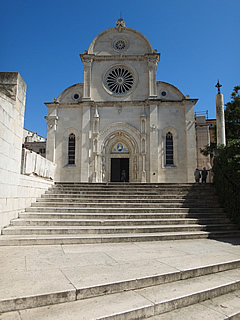
The resultant Gothic Renaissance building was the work of a succession of architects. For thirty years the Croatian architect Dalmatinac, who trained in Venice, was chief architect. After his death in 1473 his Italian apprentice, Firentinac, took over, building the barrel roof and octagonal cupola.
The cathedral stands on the west side of a lovely piazza with the Town Hall opposite. The north portal on the piazza is called the Lion Gate for the two lions flanking the entrance. Above the lions are statues of Adam and Eve.
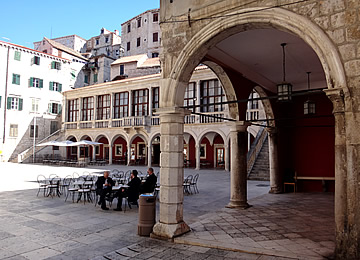
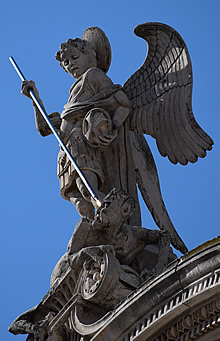
A band of Lombardy arches is decorated with carved human and animal heads - mostly lions as far as I could see. Additionally, low down on the three apses of the east front and the east end of the north wall, there is a carved frieze of 71 human heads, thought to be life portraits of Dalmatinac's contemporaries in the city.
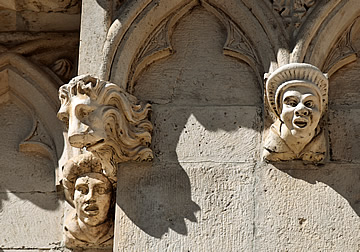
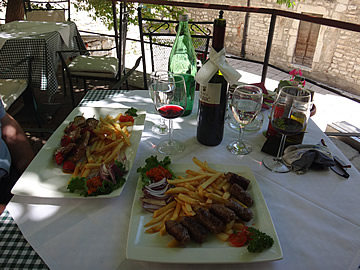
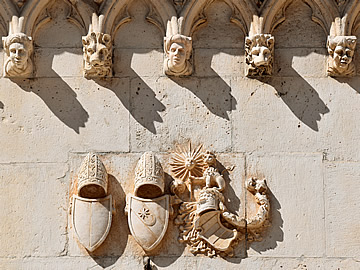
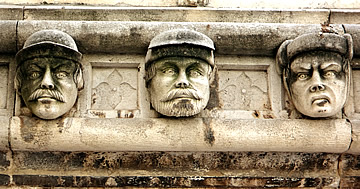
The city is surrounded by olive groves, vineyards, and fig orchards. We had a really good lunch at Tinel under shady trees overlooking a small sunny square, accompanied by a very acceptable local Babic and a superb dessert of figs in red wine.
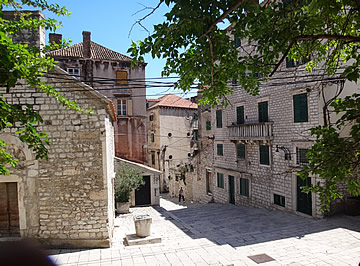
We walked up to the remains of the St. John Fortress with fabulous views over the city and out to sea and the numerous islands of the coast..
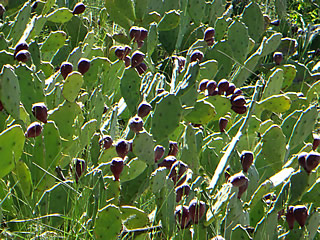
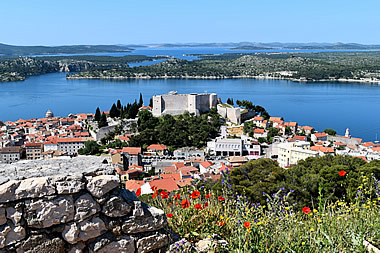
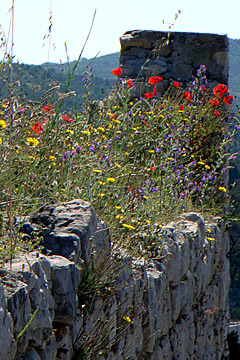
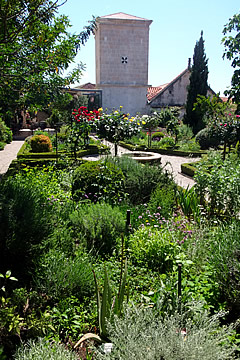
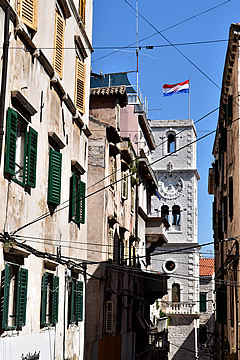
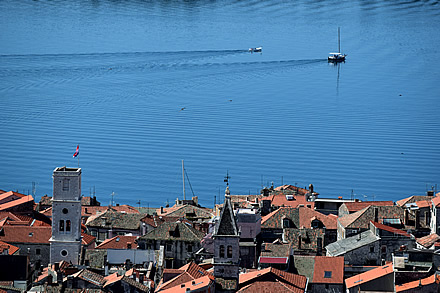
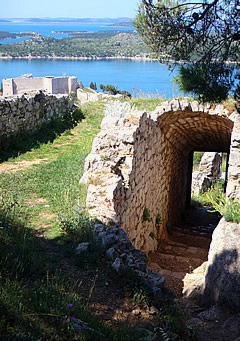
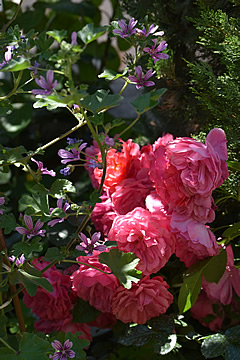
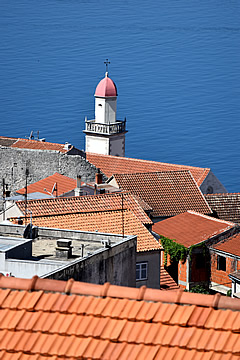
The cafe in the peaceful medieval garden of the Franciscan monastery is a nice place to stop for a drink.
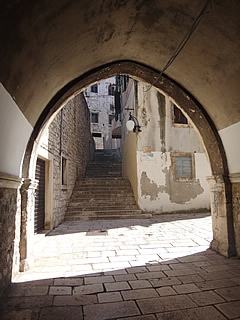
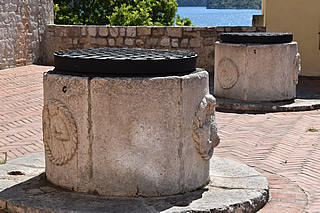
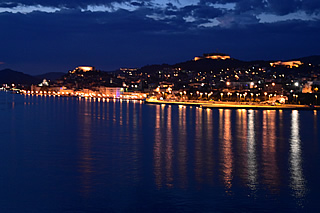
We stayed at the D-Resort Hotel - from above it is shaped like a tadpole! With a lovely sea view room and a good restaurant (excellent yellowfish tuna tataki in sesame seeds) we enjoyed our stay here. It is across the inlet on a spit of land with fine views of the city.
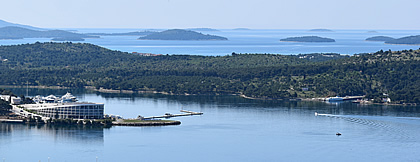
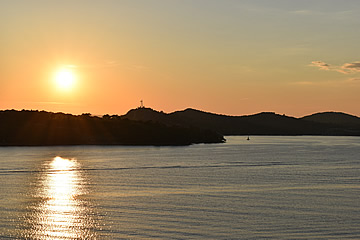
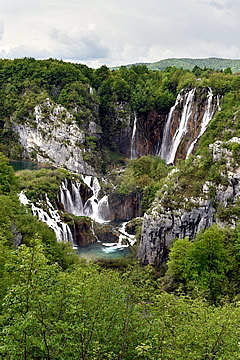
Making an early start from Sibenik we reached Plitvice Lakes by 10:15 a.m. There had been a lot of recent rain and a few of the trails were closed due to flooding, some also for maintenance. From Entrance 1 we walked around the lower lakes with great views then took a boat across the largest - Lake Kozjak.
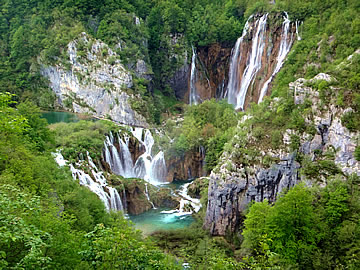
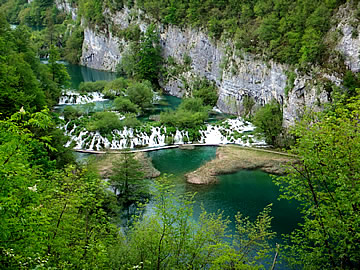
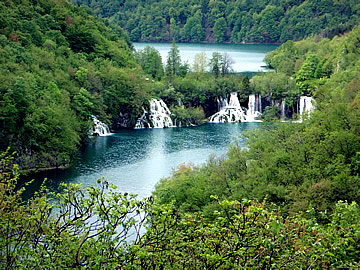
The park covers an area of 29,482 hectares, about three quarters of which is forested. The most attractive part, to which most visitors head, is the lakes area, with 16 lakes at different levels so that the water cascades over cliffs from the higher lakes to the lower.
We hadn't planned it but ended up walking the long Route K, as poor signage and closures meant this was the only one fully marked.
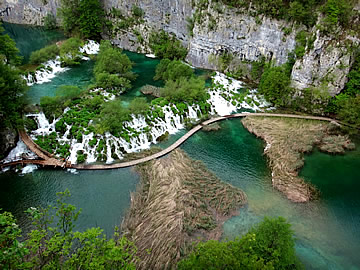
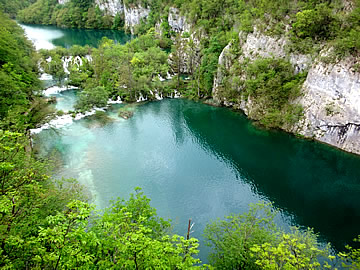
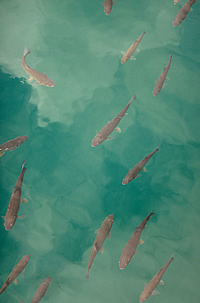
The park is very beautiful, especially when there is a lot of water flowing in the cascades
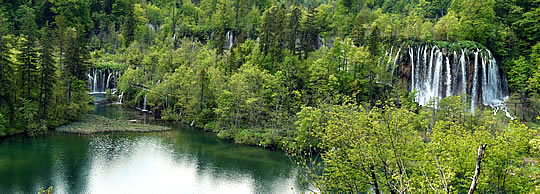
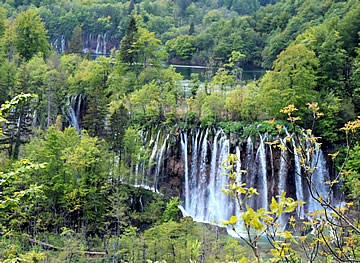
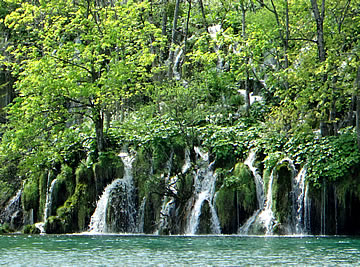
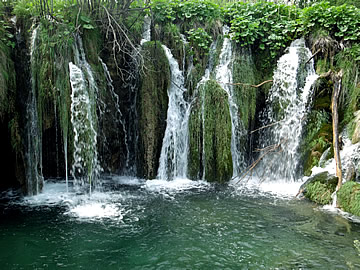
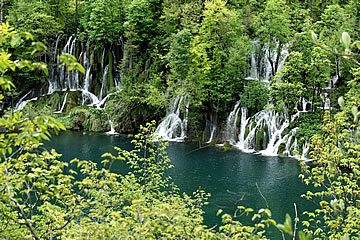
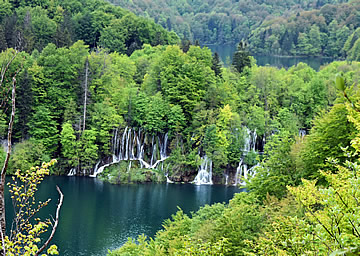
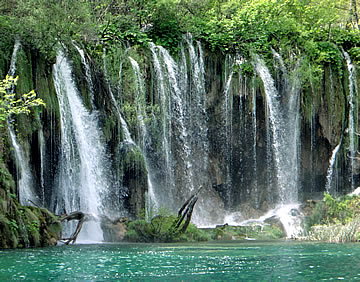
Towards the end of our walk there was a sudden thunderstorm, the rain coming down so hard it looked like the lake in front of us was boiling. It wasn't letting up so we hurried back, passing some very impressive cascades, until we spotted a park bus on the road above and scrambled up to flag the next one down.
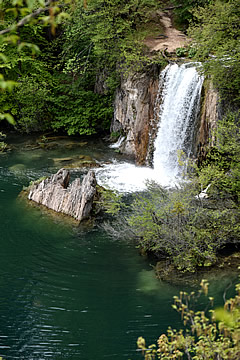
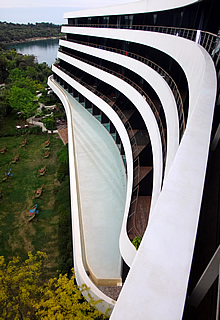
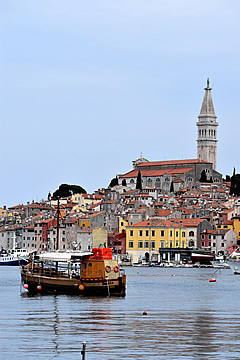
We stayed in the beautiful Lone Hotel with a vast, comfortable room but the food was so poor (to start with only one of the three restaurants was open!) that I don't think I'd go back. Odd combinations (the trendy term is "fusion" cooking!) such as very strong "snow" beans wrapped in pancetta - a combination of flavours that didn't work at all.
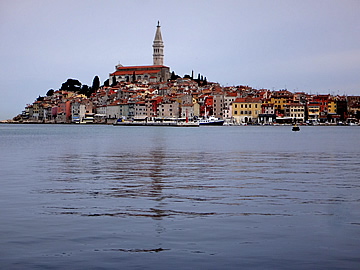
It's an easy walk along the coast to the town which looks lovely rising above the sea. However, inside it is very touristy with too many shops catering for tourists selling jewellery, clothing and terrible paintings.
We worked our way to the north to get away from the masses of tourists from three cruise ships crowding the town and found an unpretentious little bar to have a beer.
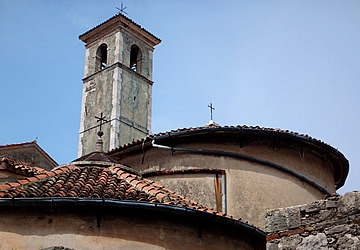
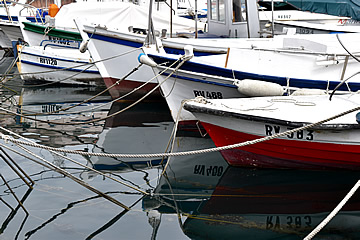
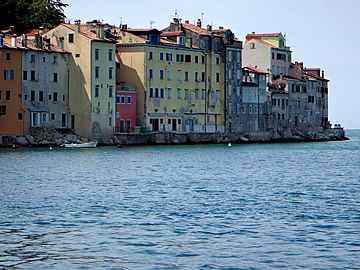
Fortunately the tourists all cleared off late morning, probably to have lunch on their ships, and the town became much quieter.
The view of Rovinj from the north is very attractive, the buildings on the edge lapped by the sea.
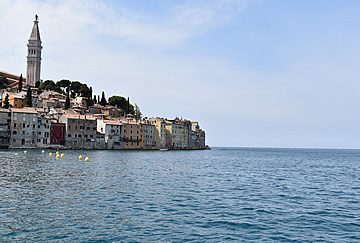
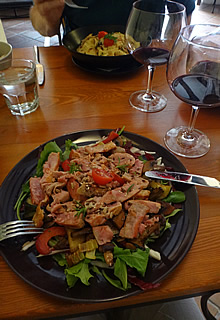
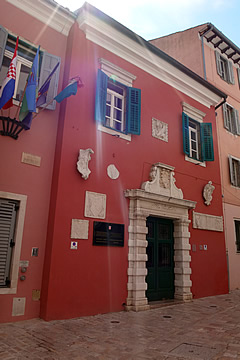
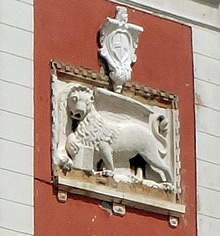
We had an excellent lunch at Tipico "Traditional Istrian cuisine with modern twist" sharing a plate of local prosciutto and cheeses followed by superb warm grilled tuna salad for me and a very good pasta dish for Andrew. The waiter was very knowledgeable about the local wines and decanted a fabulous red for us. Later we bought a bottle of the same wine - a Pilato Teran - and took it back to our room with fresh bread, cheese and cashews as we knew we wouldn't want dinner.
Tipico is on Grisia, the central pedestrian street of the old town, and, when empty, the old town is pleasant enough to wander around. The streets are narrow, lined with tall buildings including many from the Venetian period. But we preferred Sibenik.
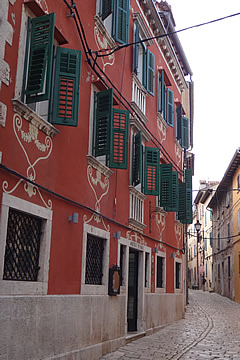
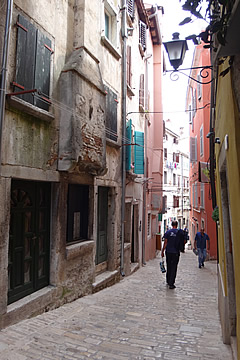
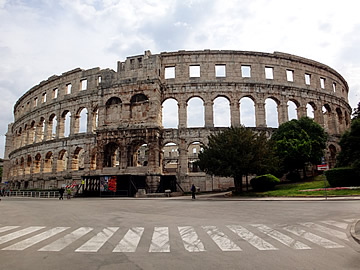
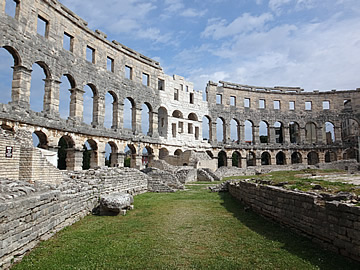
The Romans arrived in Pula in 177 B.C. but the city was also the Austro-Hungarian Empire's chief naval base and is still an important commercial centre.
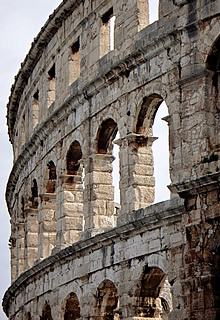
The well-preserved 2,000 year old Roman amphitheatre is the main reason for coming here. It is possible to see the underground space where once the wild animals and Christians waited before fighting to the death, though having slipped down the marble steps giving myself a nasty sprained ankle, I wasn't taking too much notice!
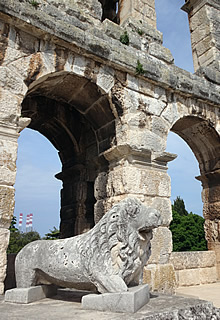
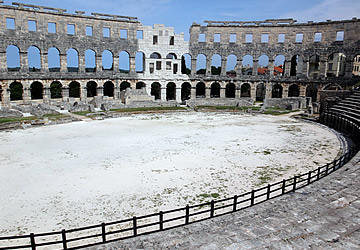
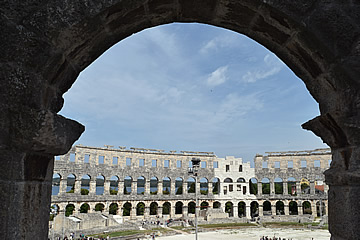
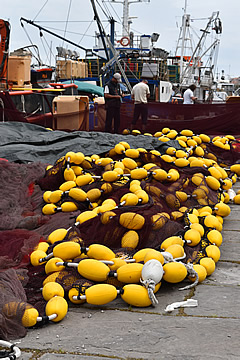
There are one or two other quite impressive Roman remains too such as the Temple of Augustus, and the city is also a working port.
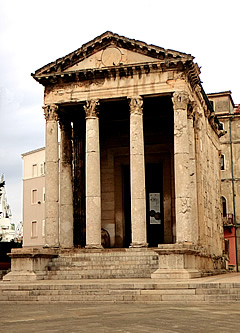
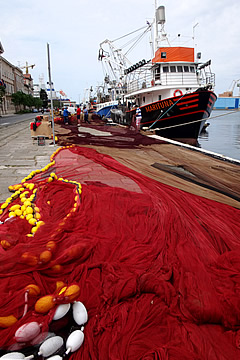
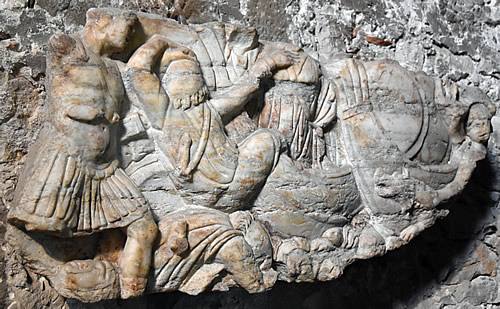
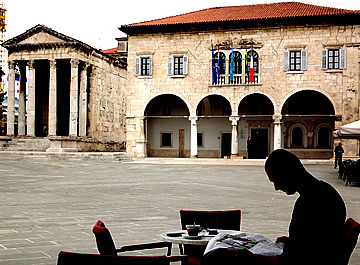
The Temple of Augustus stands next to the Town Hall on what was once the Roman Forum of Pula. Inside there are a number of Roman artefacts found in the town.
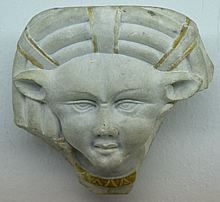
Once there were three temples here but only the Temple of Augustus and the back wall of the Temple of Diana remain - the third has made way for the 13th century Town Hall which also incorporates the Temple of Diana's back wall.
Dedicated to the Emperor Augustus, the temple was probably built before his death in 14 AD and owes its survival to being converted into a church under Byzantine rule. Though almost totally destroyed by bombing during the Second World War it was reconstructed in 1947.